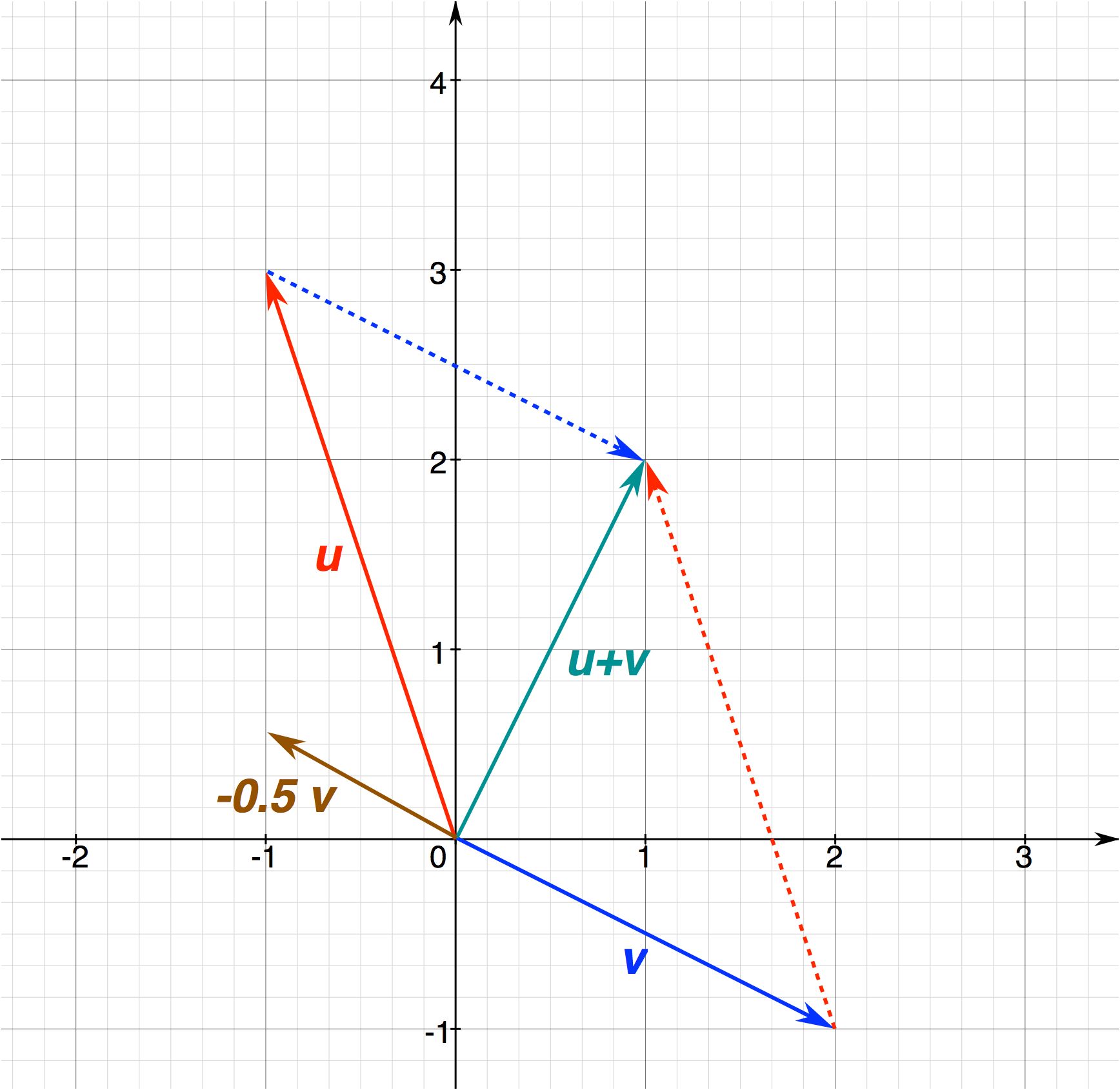The vector space \(\mathbb{R}^2\) is often depicted by a 2-dimensional plane with two perpendicular axes. The horizontal axis, labelled \(x_1\), represents the values of the first entry of tuples and the vertical axis, labelled \(x_2\), represents the values of the second entry of tuples.
Every \(u \in \mathbb{R}^2\) can represented as a point on the plane as follows: Draw a vertical line crossing the \(x_1\)-axis at the value \(u_1\) and a horizontal line crossing the \(x_2\)-axis at the value \(u_2\). The intersection of these two lines is the point on the plane that represents the tuple \(u\). (For convenience, we often refer to the point as the tuple \(u\) itself.)
The intersection of the two axes is \(\begin{bmatrix} 0 \\ 0\end{bmatrix}\) and is called the origin.
The setup above with tuples represented as points forms the basis for 2-dimensional coordinate geometry. However, in the context of vector spaces, the vectors in \(\mathbb{R}^2\) are normally represented by arrows rather than points. For example, the vector \(u \in \mathbb{R}^2\) is represented by an arrow with the tail at the origin and the head at the point \(u\). The figure below illustrates the vectors \(u = \begin{bmatrix} -1 \\ 3\end{bmatrix}\) and \(v = \begin{bmatrix} 2\\-1\end{bmatrix}\).

Using arrows, one can work with the vector space \(\mathbb{R}^2\) purely geometrically. To add \(u\) and \(v\), one simply slide (without any rotation) the arrow representing \(v\) so that its tail coincides with the head of \(u\). Then the arrow from origin to the head of the slided arrow represents \(u + v\). Note that one can get the same arrow by sliding the arrow representing \(u\) so that its tail coincides with the head of \(v\). This is to be expected since in \(\mathbb{R}^2\), \(u + v = v + u\).
To multiply \(u\) by a scalar \(\alpha\), if \(\alpha \geq 0\), create an arrow with the tail at the origin pointing in the same direction as \(u\) and with length \(\alpha\) times the length of \(u\). Hence, \(2u\) will be an arrow twice as long as \(u\) pointing in the same direction as \(u\).
If \(\alpha \lt 0\), create with the tail at the origin pointing in the opposite direction as \(u\) and with length \(\alpha\) times the length of \(u\).
The figure below illustrates \(u+v\) and \(-0.5v\) for \(u = \begin{bmatrix} -1\\3\end{bmatrix}\) and \(v = \begin{bmatrix} 2 \\ -1\end{bmatrix}\).

One can also represent vectors \(\mathbb{R}^3\) as arrows in a 3-dimensional space. The details are similar to the case for \(\mathbb{R}^2\) and are left as an exercise.
Give a sketch of the span of \(\left \{\begin{bmatrix} 2 \\ 0 \\ 1 \end{bmatrix}, \begin{bmatrix} -1 \\ 1 \\ 0 \end{bmatrix}\right \}\) in \(\mathbb{R}^3\).
For each of the following, determine if it is a subspace of \(\mathbb{R}^2\). Explain your answer. (Hint: Try to visualize these sets.)
\(\left\{ \begin{bmatrix} x_1\\x_2 \end{bmatrix} : \lvert x_1 \rvert + \lvert x_2 \rvert = 0 \right\}\)
\(\left\{ \begin{bmatrix} x_1\\x_2 \end{bmatrix} : 5x_1+3x_2 = 0 \right\}\)
\(\left\{ \begin{bmatrix} x_1\\x_2 \end{bmatrix} : x_1^2 \geq x_2 \right\}\)
\(\left\{ \begin{bmatrix} x_1\\x_2 \end{bmatrix} : x_1 - x_1x_2 = 0 \right\}\)